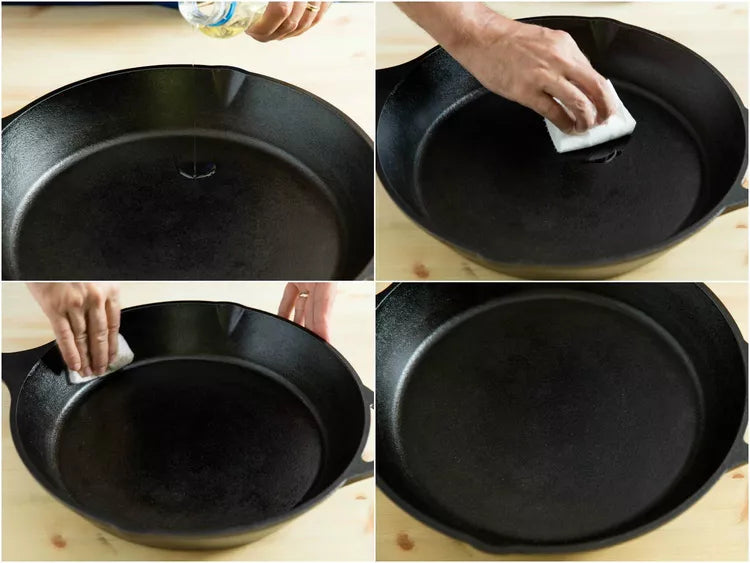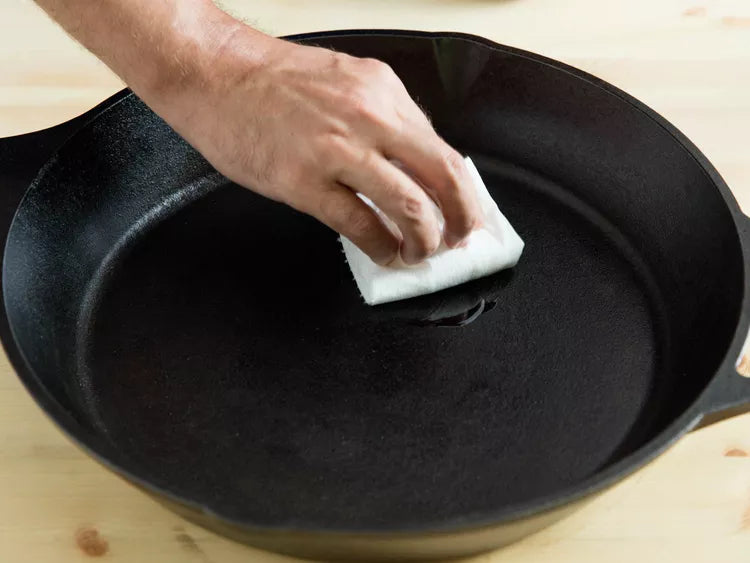As kitchen professionals, understanding the intricacies of maintaining your cooking equipment is fundamental. One common question that arises among culinary experts is: how much oil to season cast iron? Seasoning a cast iron pan not only ensures its longevity but also enhances its cooking performance. This article will provide comprehensive insights into the seasoning process, appropriate oil quantities needed, types of oil to use, and various other tips to get the best from your cast iron cookware.
:max_bytes(150000):strip_icc():format(webp)/__opt__aboutcom__coeus__resources__content_migration__serious_eats__seriouseats.com__images__2016__09__20160817-cast-iron-pan-vicky-wasik-collage-1500x1125-a15711a84a054cca9268b8ddda1e5dd2.jpg)
Understanding the Basics of Cast Iron Seasoning
Seasoning a cast iron skillet is essentially the process of creating a non-stick surface by infusing the pan with oil and heat. This process involves several steps, starting with thorough cleaning and then applying a layer of oil. The key element here is knowing how much oil to season cast iron effectively without overdoing it.
Why Seasoning is Important for Cast Iron
Seasoning provides a protective layer that prevents rust, enhances non-stick capabilities, and improves the flavor of the dishes cooked within the skillet. Many culinary experts recommend seasoning as a vital maintenance step for cast iron. If you're looking to enhance your skills in managing cast iron, take a moment to review our article on the best oil to season cast iron.
Getting Started: Preparation
Before diving into the actual seasoning process, it's important to understand how to prepare your cast iron cookware properly. Clean your pan thoroughly to remove any old seasoning, food residues, or rust. A mixture of salt and oil can serve as an abrasive scrub if necessary. Always dry it immediately after washing to prevent moisture accumulation.
Choosing the Right Oil
When it comes to discussing how much oil to season cast iron, you must first consider the type of oil that you're going to use. Some oils withstand heat better than others, making them suitable for seasoning. For instance, flaxseed oil has a high smoke point and is often recommended. However, oils like canola and grapeseed can also be excellent options.
How Much Oil to Use
Determining how much oil to use depends on the pans size and your preference for thickness in the seasoning layer. A single tablespoon of oil is generally enough for a standard 10-inch skillet. The key is to spread it evenly and avoid pooling. Too much oil can lead to a sticky surface instead of the desired smooth finish.
The Application Process
To season your cast iron correctly, apply a thin layer of your chosen oil using a paper towel, ensuring it coats the entire surface without excess dripping. After applying, wipe any remaining oil off the pan to prevent it from becoming gummy during the heating process. This balance is essential when determining how much oil to season cast iron.
Heating the Cast Iron
Once you have applied your oil, it's time to heat the skillet. Place it upside down in the oven at a high temperature, typically 450-500 degrees Fahrenheit, for about an hour. This process allows the oil to polymerize, forming that non-stick layer youre aiming for. Remember to place a baking sheet below to catch any drips to make your cleaning process a breeze.
Re-seasoning Tips
As a kitchen professional, you should always be vigilant about your cast iron's condition. If you notice food sticking or rusty patches, its time to re-season. The process remains the same: clean, oil, and heat. For more in-depth tips on maintaining your cast iron cookware, check out our article on fixing sticky cast iron.
Common Mistakes to Avoid
1. **Using Too Much Oil:** As mentioned before, excess oil can result in a sticky surface. Make sure to use just enough oil to create a thin layer.
2. **Not Heating Enough:** Insufficient heating wont allow the oil to bond with the cast iron properly, leading to an ineffective non-stick surface.
3. **Overcrowding the Oven:** When seasoning multiple pieces, make sure they have ample space to avoid uneven heating.
Frequently Asked Questions (FAQs)
Q1: Can I use olive oil to season my cast iron?
A1: While you can use olive oil, it has a lower smoke point than other oils. It might not be the best choice for high-heat seasoning.
Q2: How often should I season my cast iron?
A2: This depends on usage. Typically, re-seasoning once every few months or whenever you notice deterioration is recommended.
Q3: Is the number of layers important?
A3: Yes, applying multiple thin layers rather than one thick layer can enhance the seasoning and non-stick properties.
:max_bytes(150000):strip_icc():format(webp)/__opt__aboutcom__coeus__resources__content_migration__serious_eats__seriouseats.com__images__2016__09__20160817-cast-iron-pan-vicky-wasik-3-c56f176298784fef9e60f6cea198e0e4.jpg)
Additional Resources
If you are looking for further guidance on seasoning techniques, you can refer to this seasoning guide for professional insights.
For kitchen professionals, mastering the art of seasoning cast iron is essential. By knowing how much oil to season cast iron correctly, along with implementing these techniques, your cast iron cookware can provide exceptional performance in the kitchen for years to come.
This article contains affiliate links. We may earn a commission at no extra cost to you.






Leave a comment
This site is protected by hCaptcha and the hCaptcha Privacy Policy and Terms of Service apply.